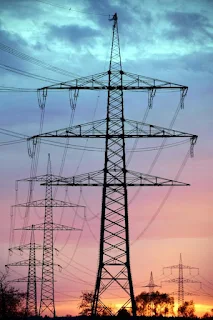Electricity, the invisible force that powers our modern world, has a fascinating and intricate origin that stretches back through the pages of history. Delving into the annals of scientific discovery and human ingenuity, we unearth incredible facts that shed light on the birth and evolution of electricity. In this exploration, we'll uncover some astonishing details that will leave you awe-inspired and deepen your appreciation for this indispensable element of our daily lives.
1. Ancient Greek Sparks: The Amber Connection
Our journey begins in ancient Greece, where the roots of electricity can be traced to the Greek word "ēlektron," meaning amber. Thales of Miletus, a Greek philosopher from the 6th century BCE, observed that rubbing amber against fur produced a mysterious force capable of attracting lightweight objects. Little did he know, he was witnessing the earliest form of static electricity, a phenomenon that would later captivate the minds of scientists across centuries.
2. Benjamin Franklin's Shocking Experiment
Fast forward to the 18th century, and we encounter the iconic Benjamin Franklin, whose legendary kite experiment in 1752 played a pivotal role in demystifying the nature of electricity. Franklin flew a kite with a key attached during a thunderstorm, proving that lightning was a form of electrical discharge. This daring experiment marked a turning point in understanding the fundamental principles of electricity and lightning conductors.
3. Alessandro Volta's Electric Eureka Moment
The 18th century also witnessed the groundbreaking work of Italian physicist Alessandro Volta, who introduced the world to the first chemical battery—the voltaic pile. In 1800, Volta stacked alternating layers of zinc, cardboard soaked in saltwater, and silver to create a continuous source of electrical energy. This invention laid the foundation for the development of batteries, revolutionizing the way we store and use electricity.
4. Michael Faraday's Electromagnetic Marvel
Michael Faraday, a British scientist in the 19th century, made another pivotal contribution to the understanding of electricity with his experiments on electromagnetism. Faraday discovered that a changing magnetic field could induce an electric current, leading to the invention of the electric generator. This revolutionary concept forms the basis of the majority of electricity generation methods employed today.
5. Thomas Edison's Illuminating Invention
In the late 19th century, Thomas Edison, the prolific American inventor, brought forth one of the most transformative applications of electricity—the incandescent light bulb. Edison's relentless experimentation led to the development of a practical, long-lasting light source, fundamentally changing the way we illuminate our homes and cities.
6. Nikola Tesla's Alternating Current Revolution
Nikola Tesla, a Serbian-American inventor and visionary, played a crucial role in the electricity narrative with his advocacy for alternating current (AC) over direct current (DC). Tesla's innovative contributions to AC power transmission systems revolutionized the generation, distribution, and utilization of electricity, forming the basis for the modern power grid.
7. The Quantum Leap: Quantum Mechanics and Electricity
As we delve deeper into the 20th century, the world of quantum mechanics unveils yet another layer of understanding electricity at the atomic and subatomic levels. Quantum physics has provided insights into the behavior of electrons, shedding light on the principles that govern electrical conductivity and the functioning of electronic devices.
Conclusion
The story of electricity is a captivating journey through the ages, marked by the inquisitiveness and determination of brilliant minds. From the static sparks of ancient Greece to the quantum leaps of modern science, the evolution of electricity has shaped the course of human civilization. As we continue to harness its power for innovation and progress, let us marvel at the incredible journey that began with a simple rub of amber and now lights up our world in ways our ancestors could only have dreamed.



